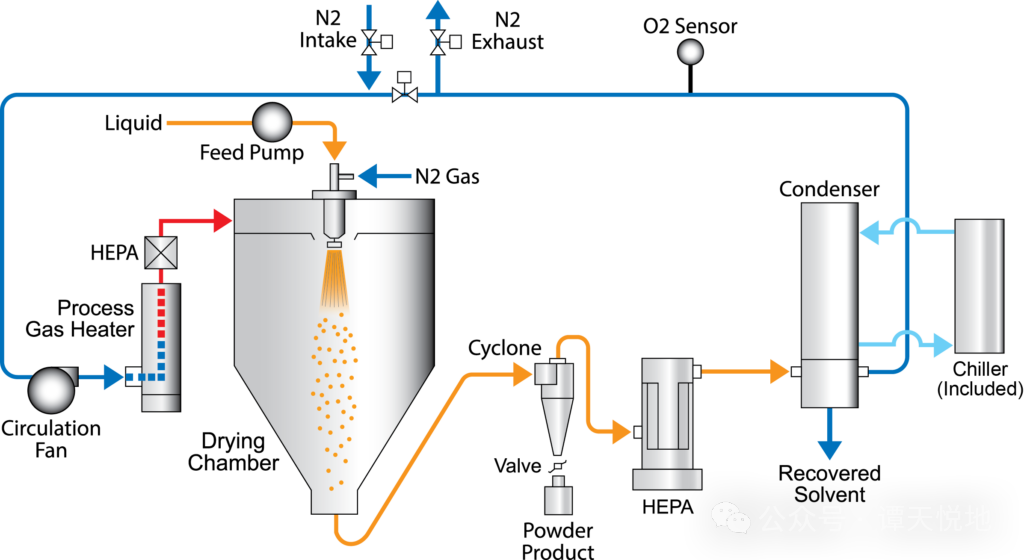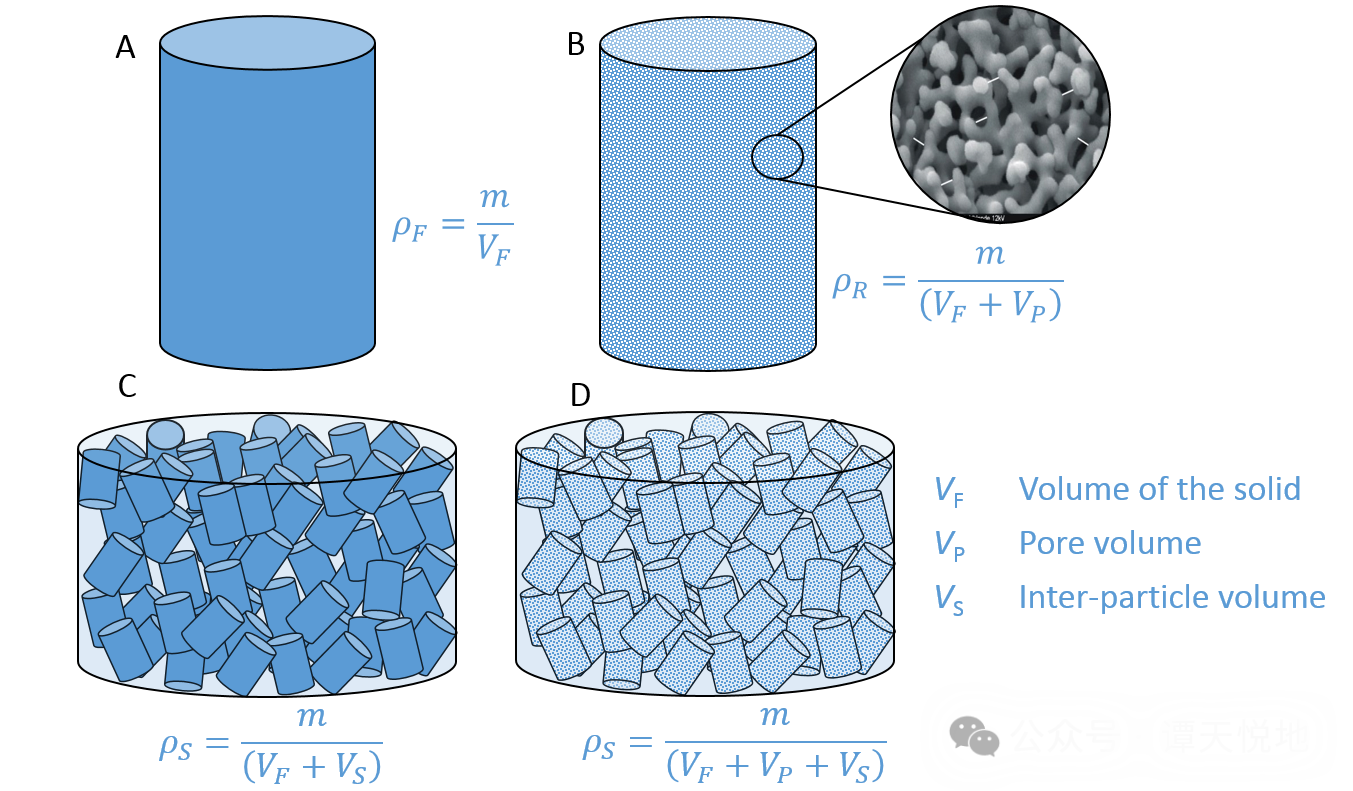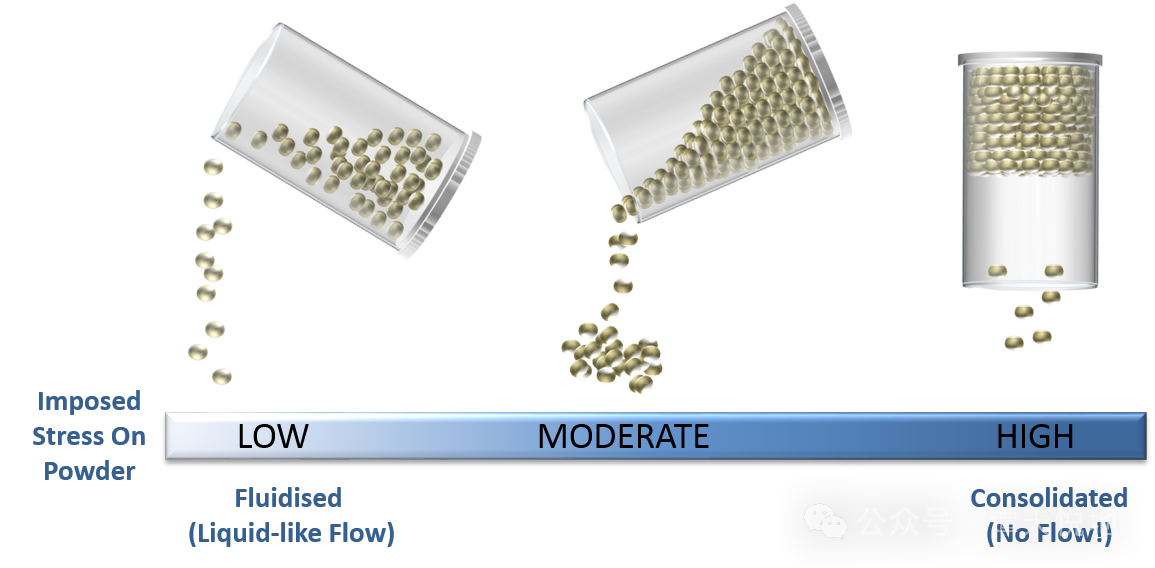Spray drying: the powdering technology behind everyday products
Many items we use in our daily lives are available in dust-free powder form. Many products, from milk powder to certain medications, cannot withstand the standard dehydration process and require special procedures to be converted into powder form. This specialized procedure is called spray drying.
The process involves dispersing a liquid or slurry in a hot, dry gas to obtain a powder with a consistent particle size distribution. Ordinary air or inert gases may be used in this process. For example, ethanol and other products that react with oxygen can be processed with hot nitrogen instead of air.
In spray drying equipment, various atomizers or nozzles are used to break liquids or slurries into atomized droplets with extremely small particle sizes.
Single fluid high pressure swirl nozzles and rotating disk nozzles are the most commonly used nozzle types. A wider particle size distribution can be achieved with the atomizer wheel, but regardless, a consistent particle size can be achieved in both methods.
Droplet sizes between 10 and 500 μm can be obtained by using specific nozzles in specific processes. A diameter range of 100 to 200 μm is the most commonly used particle size.

Main factors affecting spray drying
Inlet and outlet temperature
The temperature of the spray drying chamber usually refers to the temperature of the hot air entering the tower. Drying temperature is the most important factor affecting the physical and chemical properties of spray-dried powder.
The spray drying temperature determines the moisture content of the molded powder. Increasing the spray drying temperature from 120°C to 200°C can reduce the water in the dried powder from 5.29% to 3.88%.
The particle size of spray-dried products also depends on the hot air inlet temperature. An increase in drying temperature results in faster water evaporation, which causes microspheres to form faster without enough time to shrink, resulting in larger particle sizes.
As the inlet drying temperature increased from 138°C to 202°C, the particle size of acai berry powder increased from 13.38 μm to 20.11 μm. Similarly, the particle size of guava juice powder increased significantly with increasing inlet temperature.

The bulk density of spray-dried powder decreases with increasing temperature. Larger particles may be hollow inside or have a porous or broken structure due to higher water evaporation rates. Typically, porous or fragmented particles exhibit lower packing densities.
Additionally, because particle moisture is inversely related to drying temperature and water is denser than most dry food solids, powders produced at higher temperatures have a lower bulk density than powders produced at lower temperatures.
The fluidity of spray-dried powder is also affected by the drying temperature to a certain extent. As the temperature increases, the fluidity will decrease.
This may be due to the greater variation in particle morphology caused by the higher water evaporation rate, the smaller surface contact angle caused by the porosity or broken structure, which increases the friction between the powder and the surface and the internal resistance between particles. large, resulting in reduced liquidity.

Solubility is also an important quality characteristic of powder products and can directly influence the reconstitution behavior of spray-dried foods. As the spray drying temperature increases from 120°C to 160°C, the solubility of the powder increases.
Wall material
Sugar-rich substances, such as juices and vegetable juices, are difficult to spray-dry directly without embedding agents. Wall materials are polymers that embed active ingredients during the spray-drying process and are the most important in spray-drying. One of the factors.
Wall materials can increase the glass transition temperature and yield during spray drying, and reduce the viscosity and hygroscopicity of powder products. Common wall materials include gum arabic, maltodextrin, gelatin, starch, pectin, methylcellulose, alginate, tricalcium phosphate and their combinations.
The choice of wall material mainly depends on the purpose of spray drying and the physical and chemical properties of the processed material. Wall materials should be highly soluble in process solvents and have sufficient film-forming ability to produce low-viscosity solutions even at high concentrations.
For spray drying, they must have high molecular weight and high glass transition temperature to improve the anti-stick properties of the final product. They must be able to protect sensitive compounds from the effects of heat, oxygen, light, etc.
Commonly used wall materials for spray drying are carbohydrates.
• Starch and its derivatives (starch, maltodextrin, dextrin and cyclodextrin)
Starch and its derivatives have good spray drying properties, such as high molecular weight and high glass transition temperature, high solubility in cold water with low viscosity, anti-stick properties and the ability to produce relatively dense powders.
However, starch lacks film-forming ability, which is very detrimental to drying efficiency, especially the preservation of sensitive compounds.

• Gum (gum arabic or a mixture of acacia and karaya)
Gum. Compared with starch, gum has better film-forming ability, but its glass transition temperature is relatively low.
•Cellulose and its derivatives (cellulose, carboxymethylcellulose, hydroxypropylmethylcellulose, etc.)
Cellulose and its derivatives have good film-forming properties and surface activity, but are not easily digestible.
The combination of starch or starch derivatives and gum can improve the performance of spray drying, but the content of gum should be lower than that of starch or starch derivatives.
It has been reported that proteins, especially whey protein, have excellent film-forming ability and nutrient retention ability, and are often used together with starch or starch derivatives.
Feed speed
In the spray drying process, the feed speed is one of the important factors. The feed speed determines the residence time of the material in the drying chamber, separator and conveyor, and also affects the atomization of the material and the size of the droplets.
The feed rate basically depends on the speed of the atomizer, the higher the pump speed, the faster the feed rate. However, a higher feed rate will slow down the heat transfer, making it difficult for the droplets to fully dry and easily leading to wall sticking.
In addition, too high a feed speed will cause droplets to drop directly into the drying chamber. This is because the hot air has been saturated and the high-speed droplets cannot be fully atomized, ultimately leading to a reduction in powder yield.
Higher feed rates result in insufficient interaction time between droplets and hot air, increasing the moisture content of the spray-dried powder.
Excessively high feed rate is an improper operation that needs to be avoided during the spray drying process. Too high a feed speed is often an important factor in powder sticking to walls, absorbing moisture, and clogging pipes. In addition to reducing powder yield, it also brings extra trouble to on-site cleanup.
English
Русский
العربية
Français
Español
Português
Deutsch
italiano
日本語
한국어
Nederlands
Tiếng Việt
ไทย
Polski
Türkçe
ພາສາລາວ
Bahasa Melayu
Filipino
Bahasa Indonesia
magyar
Română
Čeština
қазақ
Српски
हिन्दी
فارسی
Slovenčina
Slovenščina
Norsk
Svenska
українська
Ελληνικά
Suomi
Հայերեն
עברית
Dansk
اردو
বাংলা
Hrvatski
Afrikaans
Gaeilge
Eesti keel
Māori
नेपाली
Oʻzbekcha
latviešu
Azərbaycan dili
Беларуская мова
Български
ქართული
Kurdî
Кыргызча

 简体中文
简体中文








